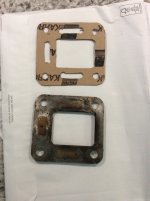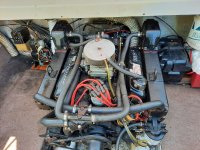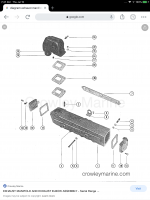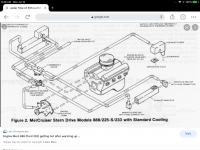soulsalvation
Seaman Apprentice
- Joined
- Jul 22, 2013
- Messages
- 42
After a heat riser bellows replacement the mechanic thought the block off plate was causing the overheating in the heat riser causing the left (pilot side) exhaust system to overheat subsequently burning the rubber elbow connecting to the y pipe to burn.
I found that part also bizarre but after some research saw that this “block off plate “ made of metal is actually in the design schematic and sandwiched between 2 fabric gaskets that have 3 water passage holes in them where the plate does not, Whaaaaat? I’m confused.
What function does this plate have and is it possibly affecting my manifolds? The mechanic removed it and said my manifolds are now running normal temperature and said the other manifold will probably overheat because of the same issue and I should probably remove that plate as well.
My pilot side manifold always ran hotter than the other as far as I have owned this boat going on 27 years.
Is there a Grand Guru out there how can definitely give some correct and undisputed knowledge on this issue.
Thanks to all who respond.
I found that part also bizarre but after some research saw that this “block off plate “ made of metal is actually in the design schematic and sandwiched between 2 fabric gaskets that have 3 water passage holes in them where the plate does not, Whaaaaat? I’m confused.
What function does this plate have and is it possibly affecting my manifolds? The mechanic removed it and said my manifolds are now running normal temperature and said the other manifold will probably overheat because of the same issue and I should probably remove that plate as well.
My pilot side manifold always ran hotter than the other as far as I have owned this boat going on 27 years.
Is there a Grand Guru out there how can definitely give some correct and undisputed knowledge on this issue.
Thanks to all who respond.



























